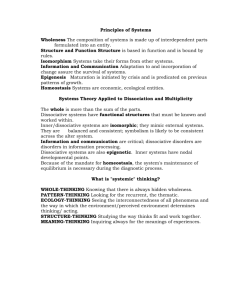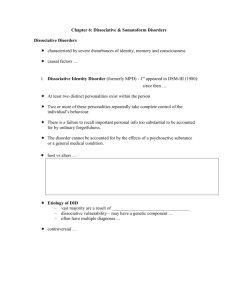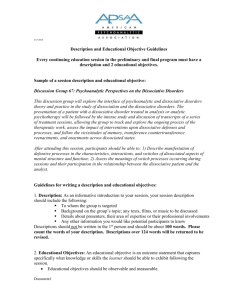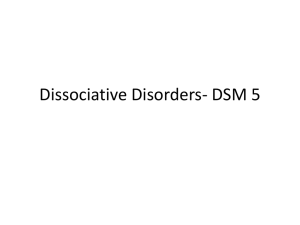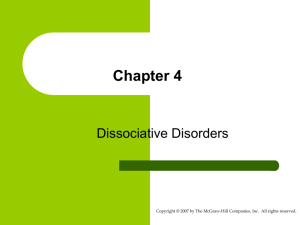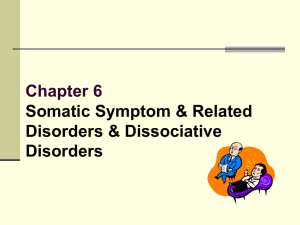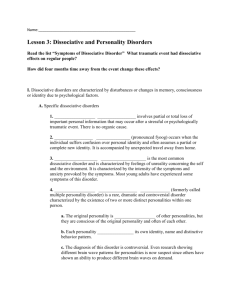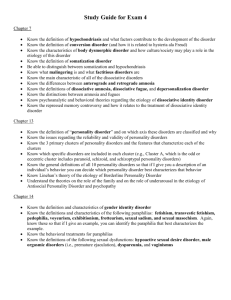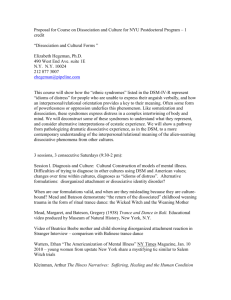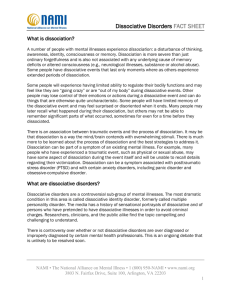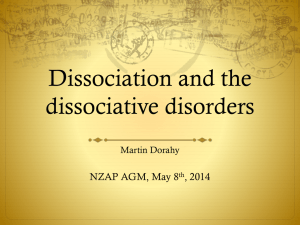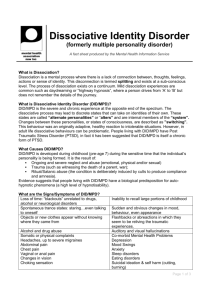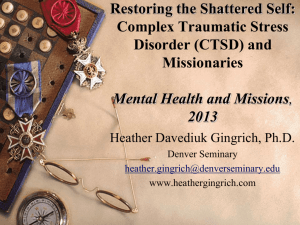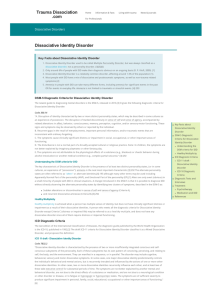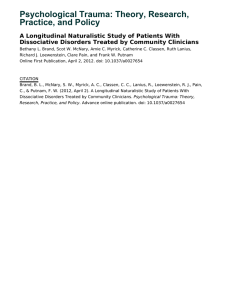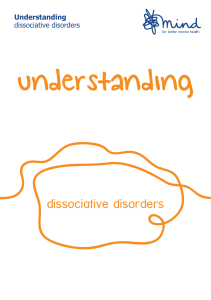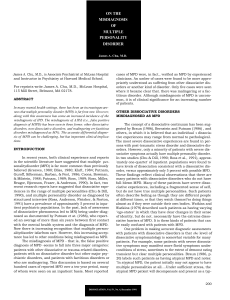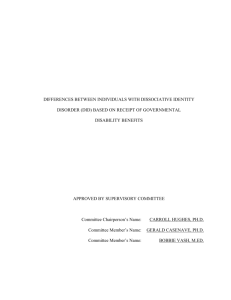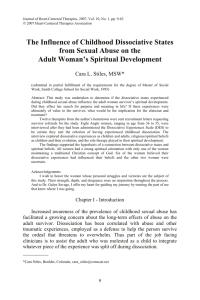Dissociation and Dissociative Disorders
advertisement
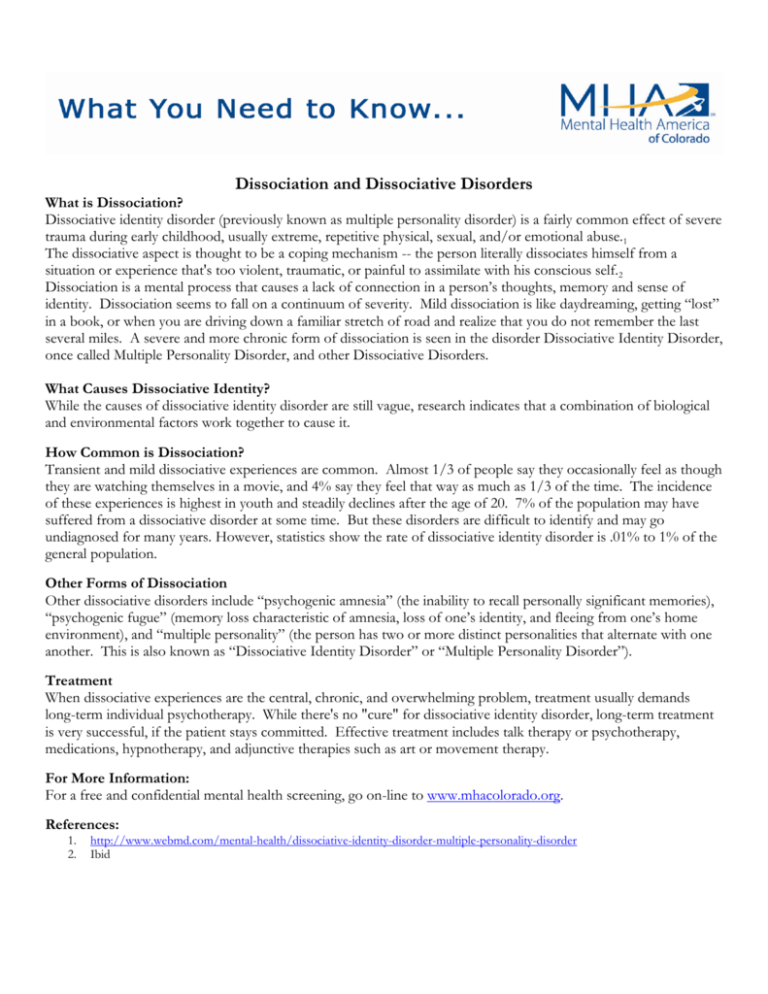
Dissociation and Dissociative Disorders What is Dissociation? Dissociative identity disorder (previously known as multiple personality disorder) is a fairly common effect of severe trauma during early childhood, usually extreme, repetitive physical, sexual, and/or emotional abuse.1 The dissociative aspect is thought to be a coping mechanism -- the person literally dissociates himself from a situation or experience that's too violent, traumatic, or painful to assimilate with his conscious self.2 Dissociation is a mental process that causes a lack of connection in a person’s thoughts, memory and sense of identity. Dissociation seems to fall on a continuum of severity. Mild dissociation is like daydreaming, getting “lost” in a book, or when you are driving down a familiar stretch of road and realize that you do not remember the last several miles. A severe and more chronic form of dissociation is seen in the disorder Dissociative Identity Disorder, once called Multiple Personality Disorder, and other Dissociative Disorders. What Causes Dissociative Identity? While the causes of dissociative identity disorder are still vague, research indicates that a combination of biological and environmental factors work together to cause it. How Common is Dissociation? Transient and mild dissociative experiences are common. Almost 1/3 of people say they occasionally feel as though they are watching themselves in a movie, and 4% say they feel that way as much as 1/3 of the time. The incidence of these experiences is highest in youth and steadily declines after the age of 20. 7% of the population may have suffered from a dissociative disorder at some time. But these disorders are difficult to identify and may go undiagnosed for many years. However, statistics show the rate of dissociative identity disorder is .01% to 1% of the general population. Other Forms of Dissociation Other dissociative disorders include “psychogenic amnesia” (the inability to recall personally significant memories), “psychogenic fugue” (memory loss characteristic of amnesia, loss of one’s identity, and fleeing from one’s home environment), and “multiple personality” (the person has two or more distinct personalities that alternate with one another. This is also known as “Dissociative Identity Disorder” or “Multiple Personality Disorder”). Treatment When dissociative experiences are the central, chronic, and overwhelming problem, treatment usually demands long-term individual psychotherapy. While there's no "cure" for dissociative identity disorder, long-term treatment is very successful, if the patient stays committed. Effective treatment includes talk therapy or psychotherapy, medications, hypnotherapy, and adjunctive therapies such as art or movement therapy. For More Information: For a free and confidential mental health screening, go on-line to www.mhacolorado.org. References: 1. 2. http://www.webmd.com/mental-health/dissociative-identity-disorder-multiple-personality-disorder Ibid American Psychiatric Association 1000 Wilson Boulevard Suite 1825 Arlington, VA 22209 Toll Free: 1-888-35-PSYCH (1-888-35-77924) Email: apa@psych.org National Institute of Mental Health 6001 Executive Boulevard, Room 8184, MSC 9663 Bethesda, MD 20892-9663 Toll Free: 1-866-615-6464
